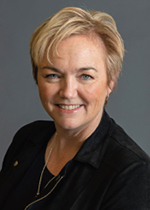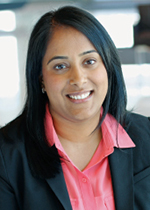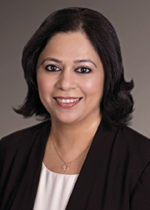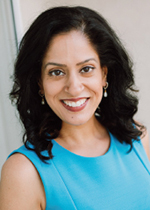
Five CPA executives share their insights
Shortly before COVID-19 hit, the World Economic Forum estimated that it would take approximately 100 years to achieve gender equality globally, with progress incremental at best.1 Unfortunately, the pandemic has added mileage to an already long road, and the Forum now estimates that it will take 135.6 years to close the global gender gap, assuming we continue on our current course.2
In North America, the estimate is now 61.5 years,3 but progress in the workplace continues at a slow pace, especially at the management level. As is the case globally, the gender gap in North America widens as the level of management increases—a phenomenon that has been dubbed the “leaky pipeline.”4 In short: The higher up the corporate ladder we look, the fewer women we find.
According to statistics compiled by Catalyst, men continued to hold over 90% of the C-suite positions in Canada in 2019.5 That same year, women accounted for only 35.3% of all managers in Canada and just 31.5% of senior managers (globally, the percentage of women in senior management roles peaked at 29% in 2019). Additionally, those women who made it to the senior leadership level tended to be overrepresented in support functions like administration and underrepresented in areas considered pipelines to CEO and board-level positions, such as research and development.
There is substantial research showing that gender diversity is good for the bottom line,6 and education levels for men and women are now at par in Canada.7 So what accounts for the ongoing disparity, particularly in management?
We asked five award-winning women working in the C-suite to share their thoughts on obstacles to parity, the importance of mentorship and representation, and the opportunities to speed progress. They are: Catherine Dahl, CPA, CMA, CEO and founder of Beanworks and a co-recipient of the Entrepreneur of the Year Award from BCBusiness in 2021; Rajveer Hundal, CPA, CA, a partner with PwC Canada and a BIV Forty Under 40 honouree in 2021; Azra Hussain, CPA, CGA, CFRE, COO of Surrey Hospitals Foundation and a recipient of the 2021 Canada’s Top 100 Most Powerful Women Award in the C-suite category; Neelam Sahota, FCPA, FCGA, CEO of DIVERSEcity and a past recipient of the Surrey Board of Trade’s Women in Business Award for Non-Profit Leader of the Year; and Winnie Shi, CPA, CA, CFA, co-president and CFO of InTransit BC and a recipient of the 2021 Canada’s Top 100 Most Powerful Women Award in the C-suite category.





From left to right: Catherine Dahl, Rajveer Hundal, Azra Hussain, Neelam Sahota, and Winnie Shi.
Why do you think we’ve made so little progress in terms of gender parity, especially at senior levels?
Catherine Dahl, CPA, CMA: I’ve seen some key trends that have, in my view, limited the ability for women to make it to the C-suite level: women’s confidence levels, the tendency for people to hire those who are like themselves, organizations’ unwillingness to make the effort required for gender parity, and business decisions as well as policies that put women at a disadvantage for taking maternity leave. In general, I would also say that if the workplace environment is off-balance due to too much male influence, it would not be a happy workplace for women. In my experience, men and women do not approach work the same way.
To the first point, I often find women undervaluing themselves. I have a team at 50/50 gender parity, so I give performance reviews to both men and women. Even though I’ve provided my female reports with the feedback to correct this, without fail, they grade their performances consistently lower than I would, while my male reports grade themselves higher. It blows my mind to see this in my own team! As well, I’ve noticed that men tend to have the confidence to push for and apply for roles that they may not be fully qualified for in terms of skills or experience. Women, in general, approach work differently—they often feel they must be overqualified to apply for the job. Of course, there are exceptions on both sides.
Secondly, like attracts like—men tend to hire men like them, and the same goes for women. Achieving gender diversity means actively filling roles in a gender-balanced way right from the start. If you build your leadership team with a strong commitment to gender parity, it will positively impact the gender balance of the business overall. You’ll find more women applying to companies with a healthy balance of male and female leaders.
Then there is the issue of maternity leave. Unfortunately, we do not see enough men taking on the childcare role and leaving their positions for 12 months. And sometimes when women do, their career progression slows down, or they lose their careers entirely. As a workforce society, we are not advanced in such a way that we reward parents who take time out and make the necessary sacrifices to raise their children. Not only that, most companies’ hiring practices also do not make it easy for them to come back to work.
“As a workforce society, we are not advanced in such a way that we reward parents who take time out and make the necessary sacrifices to raise their children. Not only that, most companies’ hiring practices also do not make it easy for them to come back to work.”
Neelam Sahota, FCPA, FCGA: Like every pervasive inequity issue, there must be systems-level change in order to change the status quo. I think the push for gender parity in the workplace began with earnest efforts to make shifts in the workplace—for example, through hiring practices—but fell short when it came to identifying the critical issues upstream that need to be equalized in order for women to enter and stay in senior-level positions. These include systemic changes needed to make high-quality childcare affordable and reevaluate how we as a society value care-giving periods and roles in our lives. This is just one of the critical issues that have been left under-addressed. And when you add in the paradigm of privilege and the barriers different women experience well before even entering the workforce, you have a really complex issue at hand that requires bold actions, which have been completely missed in the colonial context of gender parity.
“... when you add in the paradigm of privilege and the barriers different women experience well before even entering the workforce, you have a really complex issue at hand that requires bold actions, which have been completely missed in the colonial context of gender parity.”
Winnie Shi, CPA, CA, CFA: Achieving gender parity will take more than just education and training. We have to address the unconscious bias that results in words and actions by both men and women that sabotage, in varying degrees, women’s career progression.
In addition, society has been slow in providing support to allow women to fully realize their career potential. Childcare, in particular, continues to be a barrier that forces women to choose between having a family and having a career.
What can be done to speed the rate of progress?
Catherine: I believe some countries are getting it right—Norway and Sweden are great examples. North America needs to think holistically and promote women and men even if they take time to care for their children. Companies should also consider offering daycares for their employees.
At Beanworks, we stay connected to mothers on maternity leave and actively promote the idea of both parents taking time off. We hold positions open for the parents on leave for childcare and seek a healthy gender balance when hiring staff as best as we can. Another step we took to support gender equality was to create a job family matrix with each position’s skills and pay scale clearly documented. Once our staff demonstrate they’ve advanced their skills, they get elevated to the new pay band accordingly. We find that men sometimes negotiate better salary increases for themselves than women, so this transparent and consistent approach helps to remove any potential imbalance in pay.
In general, women need to value themselves more than they do, and governments can help by providing incentives to promote female leadership in their respective countries. Furthermore, companies can and should provide training for female leaders. For instance, Quadient, our new parent company, has its own female leadership empowerment program designed to help women with career advancement. Also, the Business Development Bank of Canada has a huge venture capital fund focused exclusively on investing in companies with women in the C-Suite called Women in Technology. These kinds of initiatives are helping to move the dial on gender parity in the workforce.
The World Economic Forum’s global top 10 continues to be dominated by Nordic countries, with Iceland, Norway, Finland, and Sweden all making the top five in 2021. Canada ranked 24th.
– Global Gender Gap Report 2021 (6, 9).
Neelam: I think we need to apply an equity-centered design model to gender equity in the workplace, whereby a model of gender equity is designed focusing on the needs of the most vulnerable members of the population. This approach will require input from all women, not just those in the workplace today but also—and especially—those who are on the sidelines or who don’t see themselves ever entering into senior levels because of the barriers they face. Governments, employers, and community groups need to work together to ensure that they’re providing a platform for and listening to these critical voices so that legislation and policies are created with data from all voices that matter.
Winnie: As I said earlier, to truly achieve gender parity, we need to fundamentally change the unconscious bias that restricts women to traditional gender roles. Even at senior management levels, it’s surprising to see women being asked to take on a disproportionate share of the administrative, human resources, and other “traditionally female” tasks. While all of these tasks are important to the smooth running of an organization, leaders should be more conscientious in assigning them evenly between genders.
Ultimately, however, the real work starts with what we teach our children. When I was a child, it was expected that I would do well in school and pursue post-secondary education, but gender stereotypes were still reinforced every day. Girls were supposed to be nice and take care of others—to be nurses not doctors, secretaries not CEOs. And while attitudes have changed significantly since then, most men and women in my generation probably still hold unconscious biases that prevent women from moving forward in their careers.
I think there’s a real opportunity now to change these gender stereotypes by presenting the next generation with real-life female role models. We can show them that girls are every bit as smart and strong as boys and can do whatever they want with their lives. We can also teach boys to share responsibility for the tasks that are traditionally assumed by females—especially childcare, which remains a huge barrier to career progression for women. For a lot of women, the period in her life when she chooses to have a family coincides with a critical point in her career, forcing her to choose between motherhood and career promotion. The expectation still persists that a woman will be the primary caregiver and that her career will become secondary to that of her spouse. That attitude needs to change.
Governments have to provide better support as well, by creating accessible and affordable childcare. And removing the social stigma associated with working moms will also make a significant difference. It’s important that society supports women’s career progression throughout their working lives, as the benefits from both organizational and socioeconomic perspectives are well documented.
“... to truly achieve gender parity, we need to fundamentally change the unconscious bias that restricts women to traditional gender roles. Even at senior management levels, it’s surprising to see women being asked to take on a disproportionate share of the administrative, human resources, and other 'traditionally female' tasks.”
Canada’s progress between 2006 and 2021, according to the World Economic Forum’s Global Gender Gap Index
Overall: 2006: 0.716 2021: 0.772
Economic participation and opportunity:
2006: 0.730 2021: 0.741
Educational attainment:
2006: 0.999 2021: 1.000
Political empowerment:
2006: 0.159 2021: 0.381
Health and survival:
2006: 0.978 2021: 0.968
– Global Gender Gap Report 2021 (147). For all indicators except health and survival, the equality benchmark is 1, meaning equal numbers of women and men. Health and survival have slightly different benchmarks due to variables in birth and life expectancy rates (74).
Despite the discouraging stats, have you seen a positive shift in attitude regarding women’s participation in the C-suite?
Catherine: Yes, I believe the next generation coming up is much more balanced in its thinking towards gender parity in the workforce and leadership teams. But organizations need to be more proactive. Gender parity needs to be built into the corporate KPIs—you can’t change what you don’t measure.
“Gender parity needs to be built into the corporate KPIs—you can’t change what you don’t measure.”
Neelam: There has definitely been a positive shift, especially in certain industries; however, women of colour are still way behind in being represented at the C-suite level. Until all women—not just those who hold systemic privilege—are able to reach the C-suite, we will see progress stagnate. And as the COVID-19 pandemic has shown us (with an unprecedented number of women leaving the workplace, including at senior levels), progress can even reverse course.
“Until all women—not just those who hold systemic privilege—are able to reach the C-suite, we will see progress stagnate.”
Winnie: Most definitely, yes. It’s much more common to see women hold C-Suite positions than it was 20 years ago. When I was first starting out in my career, a woman in a senior leadership position was a novelty. Now, while it’s still not commonplace, it’s at least no longer surprising that a woman would hold a C-suite position.
Finance has made good strides in this area, and you can see women assume positions like CFO, VP finance, and controller. I think other disciplines are still behind in this area, such as CIOs and general managers. Interestingly enough, a predominant view still exists that CEOs are male. Clearly work still needs to be done in this area.
In 2019, the most common position for Canadian women at the executive level was CFO.
– Rosenzweig & Company, The 15th Annual Rosenzweig Report, March 2020 (7).
How have things changed since you started your career?
Catherine: Things have changed massively. In my first management role, my boss—who was a woman—told me I should wear a skirt to work because that was the only appropriate attire for women in business. I entered the workforce in 1989 while in university, where my program was very gender diverse. I expected it would be that way outside of school too, but I was wrong. Women had very low glass ceilings then. When it came to salary equality, I was getting paid less than my male counterpart managers even though I was the only one with a four-year degree. If I hadn’t had a female boss then, I would have never even known this.
“Women had very low ceilings [when I started my career]. When it came to salary equity, I was getting paid less than my male counterpart managers even though I was the only one with a four-year degree.”
Neelam: As a woman of colour, I’ve seen more awareness built around the challenges women face and more willingness to talk openly about these challenges. And now with socio-political pressures brought to the forefront, diversity, equity, and inclusion are more common discussion points, although many organizations and governments need to see these issues as “mission critical” as opposed to “nice to haves.”
Additionally, thanks to pioneers in their cultures, women from non-western backgrounds now have a greater ability to deconstruct stereotypes and break through their own “glass ceilings within glass ceilings.”
Winnie: In the 25 years since I started my career, I’ve seen significant changes. Not only are there more women in senior leadership positions, but the way women are treated has changed significantly. It surprises me that comments made to and about women that were deemed appropriate in the workplace back then are clearly inappropriate in this day and age—and, in fact, would likely result in sexual harassment charges. I think changes in language have changed people’s attitudes about women’s roles in society, and that has allowed women to achieve more in their careers.
More recently, the “Me Too” movement has really brought that type of behaviour under the microscope. Unfortunately, it’s a double-edged sword. I think the unintended consequence of the movement is that men are less willing to be mentors and outspoken advocates of women for fear of their actions being interpreted as being inappropriate.
What were the biggest barriers you faced on your journey to the C-suite and how did you overcome them?
Catherine: In my case, I fell into a small startup and was the only one on staff qualified to act as the CFO—this led to the CEO role I am in today. But I would say my biggest challenge over the years as CEO managing an ever-growing company was building my confidence to allow myself to say: “For sure, I can do this!”
Azra Hussain, CPA, CGA, CFRE: I started my career in a financial services organization in India, with mostly male team members. Learning how to speak to be heard and how to be assertive but not “aggressive” were skills I needed to master early on. Being a career woman facing not only gender biases but also cultural barriers, I had to “prove my mettle” both professionally and personally. This was just the first time I was faced with barriers and obstacles on my way to the C-suite.
Immigrating to Canada meant starting life over and experiencing a new country, a new culture, and new criticisms. I’d completed my bachelor of commerce degree in India but knew I had to earn a Canadian certification to further my career. I worked and studied part-time to complete my CPA (then CGA) certification while raising two young children, which was a huge challenge in and of itself.
I overcame the many obstacles on my journey to the C-suite by taking the time to identify my core strengths—intellectual curiosity, patience, and a strong work ethic instilled in me by my father—and then challenging myself to have the confidence to use these strengths in every part of my life. I call it having “confidence in your competence.” Using these strengths confidently has also made it possible for me to lead through the COVID-19 crisis and achieve rapid transitioning with minimal disruption.
“Being a career women facing not only gender biases but also cultural barriers, I had to 'prove my mettle' both professionally and personally ... Immigrating to Canada meant starting life over and experiencing a new country, a new culture, and new criticisms.”
Neelam: Self-confidence was a bit of barrier for me, but the bigger barrier was knowing that taking this step would have repercussions on so many other aspects of my life. I’m very fortunate to have a supportive partner with whom I share common values on gender equity, so I took this time to reflect with him. The decision to move forward in this next phase of my career then became really clear, as I was able to see how I could balance being in the C-suite with motherhood and being a partner, along with the myriad of other roles we, as women, play.
Winnie: The biggest barriers were believing in my own abilities to reach the next level and having the courage to ask for what I wanted. I think a lot of women undervalue their abilities and hesitate when it comes to advocating for themselves. Having supportive mentors and role models gave me the courage I needed to pursue the next step in my career.
How important was it to have a mentor along the way?
Catherine: I’ve had a business coach for about six years now, and it has been the best mentorship and support system I have had overall. I was also fortunate to have a strong board of directors with women on it—they supported me and my commitment to gender equality when I was building Beanworks.
Rajveer Hundal, CPA, CA: I’ve had a number of mentors and advocates over the years who’ve played an important role in my journey. The time in my career when having an advocate, mentor, and sponsor was most key was when I was promoted from a senior manager to partner. This individual was another female partner, Kate Furber, CPA, CA. I worked closely with Kate, and she supported me by opening the door to various opportunities and making sure that I had a seat at the table. She played an important role in me being where I am today.
“The time in my life when having an advocate, mentor, and sponsor was most key was when I was promoted from a senior manager to partner.”
Azra: Mentors are a must for a person to grow and mature in any organization. We only have one pair of eyes with which we see the world. Even when we think we’re being open-minded and attempting to look at ourselves and/or a situation from all different angles, we’re still seeing things through our own eyes only. Nothing in this world is that one-dimensional.
This is why, regardless of where I am on my career path, I always have what I call my “personal board of advisors.” They are my champions and truth tellers—a group of people who care about me enough to have the courage to tell me the truth, even when it’s tough and difficult to hear.
I strive for diversity on my “board,” enlisting male and female mentors with diverse backgrounds in education, expertise, and industry. Over the years, I’ve continually taken stock to see who I might need to add before embarking on the next stage of my career.
By sharing their personal experiences with me, my mentors help me make hard decisions. They hold up a mirror for me to see my true self. The advice and guidance I’ve received from my mentors has been invaluable—it has helped me grow both professionally and personally.
Neelam: It was incredibly important to me to have a mentor and support from peers along the way. It made all the difference, especially in the beginning, knowing that I had people in my corner, so to speak. When I needed to work through ideas or get critical feedback, I knew I could do so in a safe space. Good advice, even if it isn’t what you want to hear, is priceless.
Winnie: When I graduated from university, I thought hard work was going to be the key to my success. I had no idea then how important it would be to have mentors and advocates throughout my career. I’ve had many mentors and advocates throughout my career who took the time to give me valuable advice, listen to issues as they arose, open doors for me, help me build relationships, and advocate for me. I’m so grateful to them—I simply couldn’t have done it without their support.
Mentors and advocates don’t appear out of thin air, so I would advise all young professionals to actively cultivate these relationships. I also try to be generous with my time and advice and look for opportunities to give back and mentor and advocate for others.
“When I graduated from university, I thought hard work was going to be the key to my success. I had no idea then how important it would be to have mentors and advocates throughout my career.”
We know representation matters—did you have a female role model?
Catherine: I’ve had many. There were big names that led the way for me—women like Kim Campbell, Canada’s first and only female prime minister. I had the pleasure and good fortune of meeting her and being in her company for several hours in 2007—I found her to be such an incredible and smart lady. More locally, Shannon Byrne Susko [founder & CEO of Metronome United] has had an impact on me as well.
Azra: Yes, absolutely. As a matter of fact, I believe that having powerful, intelligent women extending their helping hands and offering their wisdom is what helped lift me to great heights.
I would say the earliest role model was my mother. I grew up watching her overcome adversities and always standing strong in the face of any hardship. I believe it’s important that women today have these kinds of role models in resilience. We need to look for help and guidance from women who have worked through adversity and risen up in spite of it. The power realized from these relationships can enable women to thrive and succeed in leadership positions.
In working with mentors over the years, I learned it was important to make the best use of their valuable time. With this in mind, we embarked on what we called our “minute mentoring moments”— short regular meetings to monitor my goals and objectives. We used a SWOT analysis as a feedback mechanism, and if I was seeking advice on an issue, I always sent the details a few days in advance. I now share these secrets to a successful role model relationship with women within my community who have come into my life looking for guidance and support.
I believe that as we move through our lives, personally and professionally, we should consistently keep one hand reaching up for guidance and support from a role model and the other reaching down to be that role model for someone else.
“... we should consistently keep one hand reaching up for guidance and support from a role model and the other reaching down to be that role model for someone else.”
Neelam: Earlier in my career, I was aware of many women in the South Asian community who were real trailblazers, but their stories were rarely shared in a tangible way that other women could see as stories of success. The lack of women of colour at senior levels was glaringly obvious growing up, but as I progressed in my career, so did my circle of peers who were trailblazers in their own right, and a sense of community did form.
Representation is incredibly important, but even though my own mentors didn’t look like me, I learned so much from them. Over time, my own experiences also shaped my views on women in leadership, and I’m grateful that all of this diverse input has enabled me to approach leadership through a truly intersectional lens.
Winnie: I have many female role models from whom I draw the courage and inspiration to go farther in my career. In addition to the many women I’ve encountered in the course of business, I’ve had the privilege of engaging with some of the most successful and courageous women in my sector through my work on the steering committee of the Women’s Infrastructure Network. I’m constantly amazed by what they are able to accomplish in their humble fashion, and they inspire me to adopt a “can-do” attitude. I’m a firm believer in the importance of role models.
Addressing the impact of COVID-19 on gender equality, the World Economic Forum says it will take gender-sensitive recovery strategies to make up the considerable ground lost in 2020. These strategies include advancing women’s rise to leadership and embedding gender parity into the future of work.
– Global Gender Gap Report 2021 (preface).
The COVID-19 pandemic has disproportionately affected women in terms of job loss. Have you seen an impact at the executive level as well?
Catherine: From personal experience, I can’t say with certainty that women have been disproportionately impacted by the pandemic career-wise, I’m sure they took on more of the housework and childcare when everyone was forced to work at home and kids did not go to school. I imagine this would have had a significant impact on their capacity to work relative to their male counterparts.
Neelam: I’ve definitely seen an impact at the executive level with turnover and complete exhaustion with those that remained in their positions. The COVID-19 pandemic didn’t create these underlying barriers/pressures for women—they’ve always been there (like still being responsible for the vast majority of caregiving, organizing households, and being paid less than their male counterparts)—it simply exposed the fault lines as our lives got turned upside down.
Winnie: I personally haven’t seen job loss disproportionately affect women at the executive level. Management positions generally allow for working remotely, which permits women to retain their positions. Having said that, the impact of COVID-19 on childcare needs is disproportionately borne by women at all levels, and I think the stress level of juggling career and home responsibilities is at an all-time high.
How do you think things will shake out after the pandemic?
Neelam: I think we have a real opportunity here to not just patch up the fault lines and revert to the way things were. Obviously, people will need to make choices that work for them—especially economically, given that dual incomes are a necessity for most families. However, if government and businesses are savvy, they will see the potential to leverage the entire economic base—not just the privileged ones—to bring us through to an era of economic prosperity where everyone has the opportunity to find purpose and be valued for their skills and experience. This is a long game though, and it will be interesting to see if government and businesses would much rather propel a short-term knowledge-economy approach to a recovery.
Winnie: I honestly don’t know how things will shake out. I think it will affect women unevenly across levels and disciplines. With labour shortages, I think there’s a real opportunity for greater representation of women in certain industries, such as trades. Also, I think a work-from-home or hybrid model is likely here to stay, which will change how childcare is managed. Whether that will mean that women take on a bigger share or that childcare will be more evenly distributed than before the pandemic remains to be seen.
How can women in senior leadership positions lift up the next generation and remove barriers?
Catherine: Actively work at hiring a balanced team.
Rajveer: It’s our responsibility as leaders to use our voices to make a positive impact and support other women and other individuals with diverse backgrounds in building successful careers. We must ensure that we continue to prioritize diversity and inclusion and make it part of the overall business strategy. We all know that gender parity is good for business. There’s ample evidence that having a diverse workforce and implementing deliberate inclusion efforts drives better outcomes. In turn, these better outcomes elevate business growth and catalyze the broader economic development of our society, which benefits everyone.
For myself, personally, I believe it’s my responsibility as a leader to ensure that I have the courage every day to share my perspectives and challenge unconscious biases to further drive diversity and inclusion. I want to make sure others from diverse backgrounds—whether it be gender, cultural, or another form of diversity—can learn and benefit from the lessons I’ve learned during my journey.
This is why being a mentor and champion for diversity and inclusion within the firm and in the broader business community has been so important to me—it means that I am doing my part to make sure we continue moving the dial, not only from a gender equality perspective but from other diverse perspectives as well.
“... it’s my responsibility as a leader to ensure that I have the courage every day to share my perspectives and challenge unconscious biases to further drive diversity and inclusion.”
Azra: As women in senior leadership positions, we have a responsibility to make ourselves available and create a space—an ecosystem of communication, collaboration, and inspiration—to share what we’ve learned.
We also need to embrace what it means to be champions for the next generation. A big part of being a champion is having the strength to be vulnerable and showing the next generation that being vulnerable does not make you weak—it makes you accessible. This may include discussing the psychological barriers many women impose on themselves due to expectations handed down from their cultures, traditions, or societies. These internal barriers are difficult to navigate and can be just as challenging as any external ones.
I think women in positions of power need to turn the conversation to creating a diverse support system—one that has a knowledge base around different cultures, traditions, and societies—to create a more inclusive company culture. We also need to look at hybrid work models, because we’re on the cusp of a new working world. We’ve learned a lot about what’s possible with hybrid models of work during the pandemic, and taking these models forward would remove many of the barriers the next generation faces when wanting to start a family. It could also encourage more young women to join the workforce.
Having conversations about the various barriers the next generation may encounter could even help us create a new workforce that is able to focus less on balancing work/life and more on harmonizing it.
“... women in positions of power need to turn the conversation to creating a diverse support system—one that has a knowledge base around different cultures, traditions, and societies ...”
Neelam: I think women in senior leadership positions can lift up the next generation in a number of ways. First off, we have a responsibility to advocate for systems-level change, whether that’s by influencing policy at the government level or speaking up in the boardroom.
Secondly, I think we really need to amplify our voices—especially those that are speaking truth to power on difficult topics. Creating allyship and advocating change needs to be a movement.
Last but not least, we need to share our vulnerabilities openly and demystify what it means to be senior leaders. We need to talk openly about our challenges, hurdles, and fears while also championing our accomplishments. Our stories need to resonate so the next generation can see themselves one day in these senior roles and know that they’re supported by a network of women who’ve walked in these boardrooms before them.
“We need to talk openly about our challenges, hurdles, and fears while also championing our accomplishments. Our stories need to resonate so the next generation can see themselves one day in these senior roles ...”
Winnie: Be a visible role model. Be a mentor and advocate for the next generation. Speak out about the importance of gender parity. Be involved in organizational change to promote gender parity.
Researchers for McKinsey have identified the following five initiatives used by “best-in-class” companies in Canada to drive progress on gender equality:
- Articulating a clear business case for change.
- Setting targets, tracking performance, sharing results, and holding leaders accountable.
- Creating formal sponsorship programs to help promote women.
- Making flexibility compatible with promotion and career progression.
- Raising awareness of, and combatting, unconscious bias to create a truly inclusive environment.
– McKinsey & Company, The Power of Parity: Advancing Women's Equality in Canada, June 2017 (executive summary).
What would you say to a young girl who wants to be the head of her own company someday?
Catherine: Go for it! You can do whatever you set your mind to!
Rajveer: You have the power to achieve anything you put your mind to. Drive, ambition, and dedication are key to achieving your goal. Build relationships in a way that is authentic to you and lean on these relationships over the course of your journey. View each learning opportunity and experience as an investment in yourself as a professional and in your career. It’s critical to face challenges head-on—these experiences will shape you into a resilient leader.
Azra: Be confident in your competence. You have skills to contribute to the world and specific traits and abilities that are as unique as your own fingerprints. These are your core strengths. Take the time to identify these strengths and then have enough confidence in them to use them in every part of your life—this is where your true power lies. Additionally, find a mentor who will help you see your true inner beauty, which you may not be able to see for yourself just yet.
Neelam: Be focused in what you want, and know that sometimes along the way you may take one step forward and two steps back. You may fall or even fail, but that is part of the process. Success is achieved through iterations, and only you can define what success means for you. Own your own narrative and believe in yourself.
Winnie: Go for it. Be courageous and reach high. Don’t be afraid to ask questions and to ask for help. Don’t be afraid to fail and pick yourself up. Believe in yourself.
Resources for women in business
CPABC is committed to providing education and resources that support all members in their careers, and this includes supporting women’s progression to senior leadership.
On CPABC's Women in the Profession web page, you’ll find a variety of resources curated for women in the profession, including inspiring profiles and links to career navigation workbooks and toolkits produced by CPA Canada.
Additionally, CPABC is launching the Leadership Certificate Program for Women in September 2022. This cohort-based professional development program is designed for female CPAs at the early-to-mid-career level. It will provide training on a variety of leadership-related topics and give participants opportunities to network and build relationships with peers. The program is open to anyone interested in supporting women’s leadership development. More details will be available on the PD website this spring.
Author
Michelle McRae is the managing editor of CPABC in Focus. She thanks these five trailblazers for taking time out of their busy schedules to participate in this article. This article was published in the March/April 2022 issue of CPABC in Focus.
Photo credits
Photo of Catherine Dahl by Myshsael Schlyecher Photography. Photo of Azra Hussain by Photography by Marlow. Photo of Neelam Sahota by Brit Kwasney Photo. Photos of Rajveer Hundal and Winnie Shi provided by the members.



